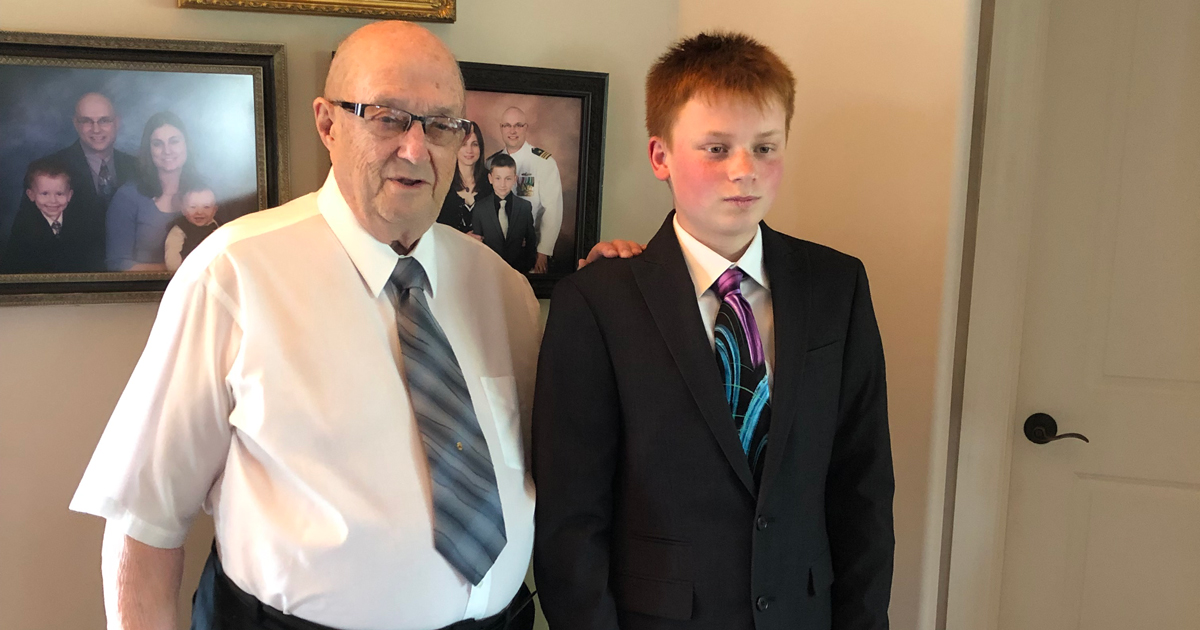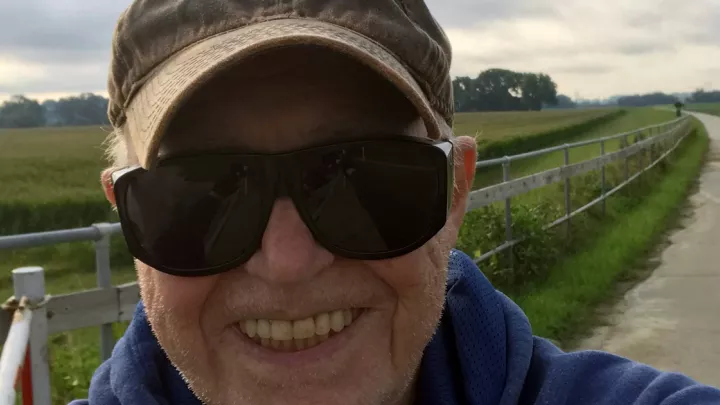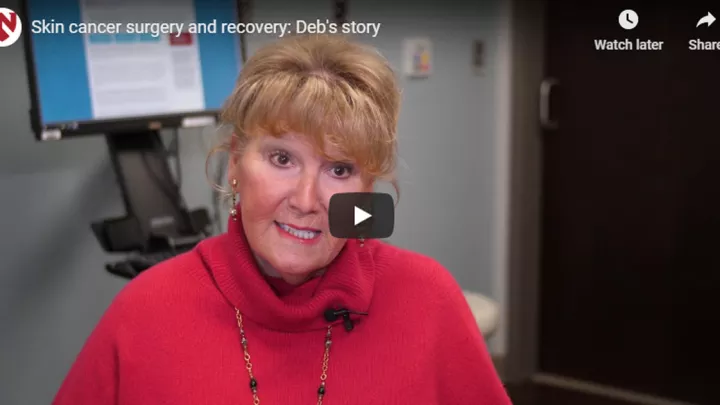My Mohs surgery: the Dennis Haney story

When Dennis Haney of Omaha, Nebraska, first noticed suspicious areas on his skin, he was fortunate to have a doctor in the family. His daughter-in-law encouraged him to see a dermatologist and referred him to Adam Sutton, MD, a fellowship trained Mohs surgeon at the Nebraska Medicine Dermatology Clinic specializing in skin cancer. Haney first noticed skin irregularities in the fall of 2018. "I discovered I had a sore behind my left shoulder and left lower leg. Eventually, we found a total of seven spots all over my body," says Haney. "There was no pain or itch, and the spots looked different than normal, with a purplish color to them. The only difference between the two initial areas was shape – one was roundish and the other was elongated." Biopsies, or small samples of the abnormal skin were taken, and confirmed the diagnosis of skin cancer.
With no family history of skin cancer, his diagnosis was a bit of a shock. However, Dr. Sutton and his team fully prepared Haney for the Mohs procedure. Mohs surgery is an advanced surgical technique used to treat skin cancer – precisely removing cancer cells while helping to avoid healthy tissue and minimize scarring. The procedure has the highest cure rates and often results in smaller scars, improving outcomes. Performed in a clinic office under local anesthesia, the Mohs procedure is highly effective. Nebraska Medicine has a comprehensive Skin Cancer and Mohs Surgery program in the department of dermatology with fellowship-trained Mohs surgeon, Dr. Sutton.
Haney had six Mohs treatments over two years. "Dr. Sutton checked me out and told me ahead of time what each step was going to be. He and the staff were prepared for every detail and made me comfortable throughout the process. On the scheduled day, each area involved was numbed, samples taken, and then sent to the lab to be processed and evaluated by the Mohs surgeon under the microscope. I was sent to a waiting room until the results came back. If the edges came back clear, I was taken back to the procedure area and Dr. Sutton sutured up the surgical defect," says Haney. "If samples still showed cancer along any of the edges, a second layer was taken, and the same procedure was repeated. We continued this for as long as it took to clear the cancer. Once a sample was found to be clear, a decision was made to stitch up the area. I had little to no discomfort during the process." The entire process of surgically removing the cancer and reconstructing the area is done during the same visit.
Because Haney had areas of concern spread out on various parts of his body, he now heads to the clinic for a recheck every five to six months. As he looks back on his experience, he is grateful for the exceptional medical team and the care he received. "I was really impressed with Dr. Sutton and his entire staff. They showed me they really cared, answered all my questions, and made me feel like they wanted to help me. Everyone knew their job and were very professional. From A to Z, I am extremely happy with how everything was handled and the results."
If you are hesitant to see a doctor about skin concerns or have been diagnosed and are apprehensive about the Mohs procedure, Haney has some advice. "I would say to all of you – don't be afraid. Just because you get checked out doesn't necessarily mean you have cancer. If you do have a skin cancer diagnosis, the treatment is nothing to be scared of and certainly better than letting it spread. Trust me when I say – get it taken care of and live a long life. Please, don't wait." Haney has been married to the same lovely woman for over 58 years, has three sons and four grandchildren. He is turning 80 years old this month and is thankful for his many blessings.







